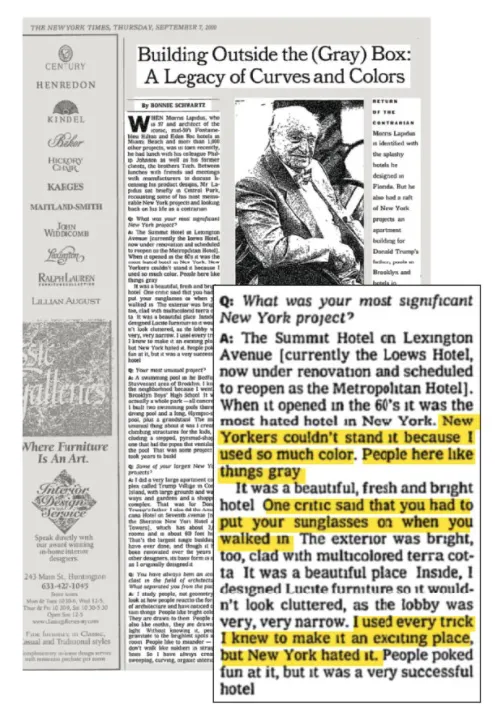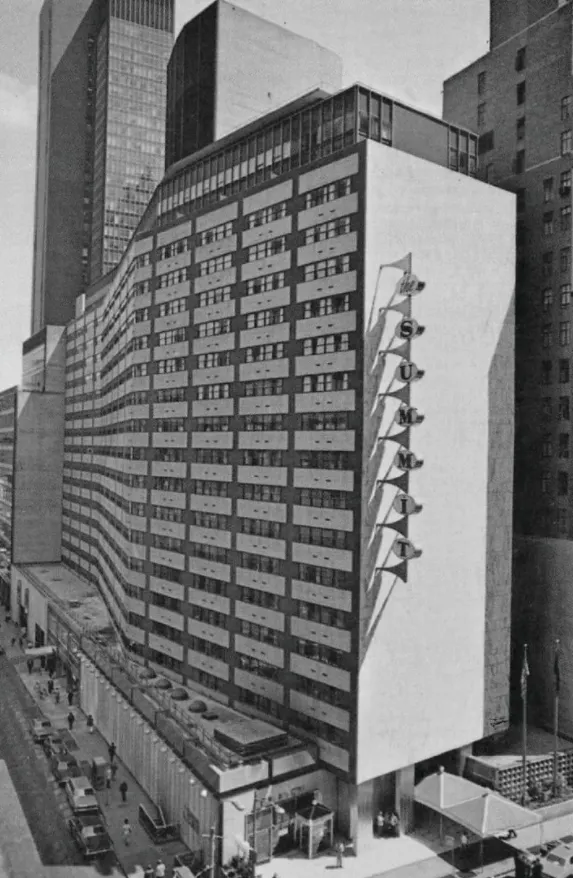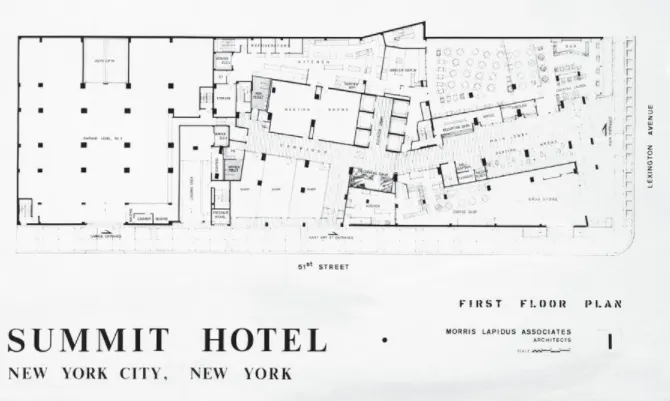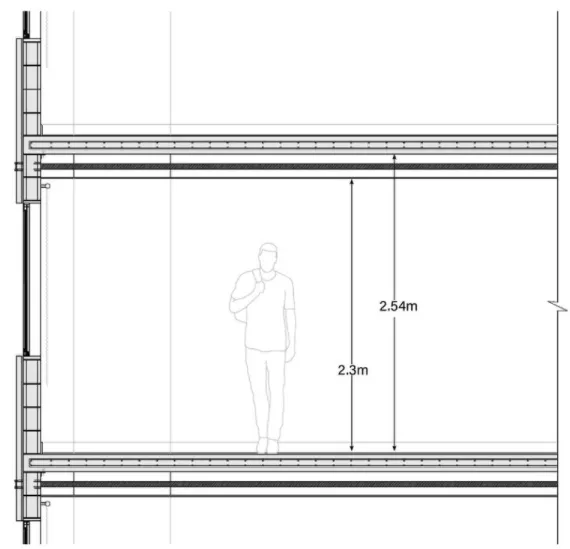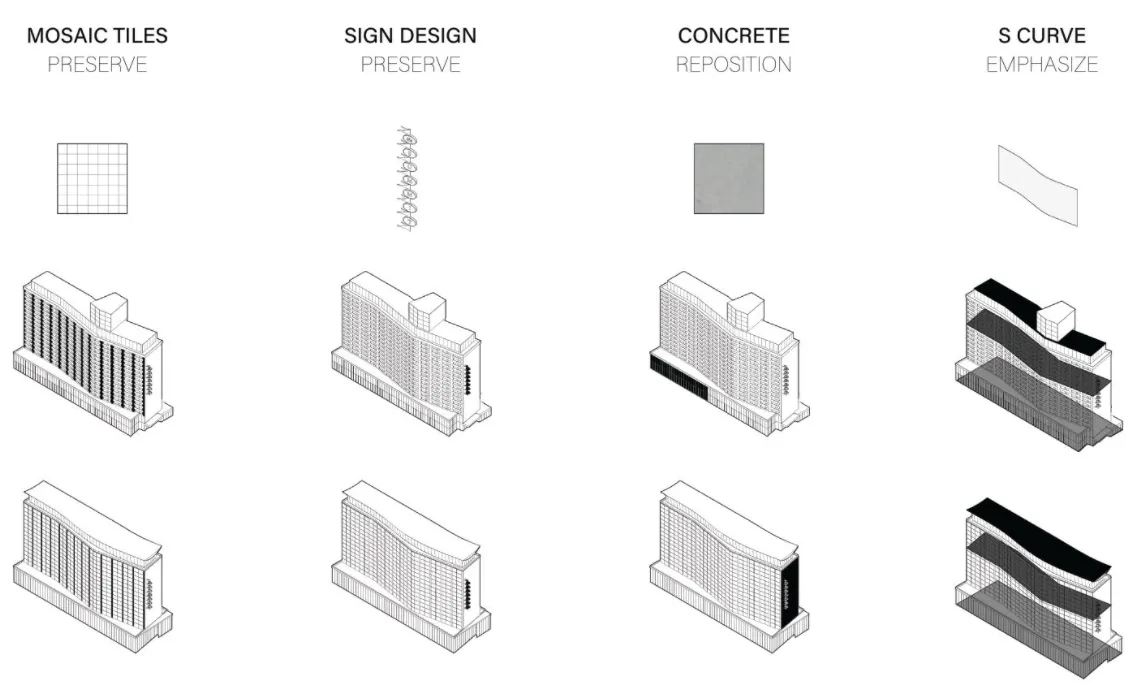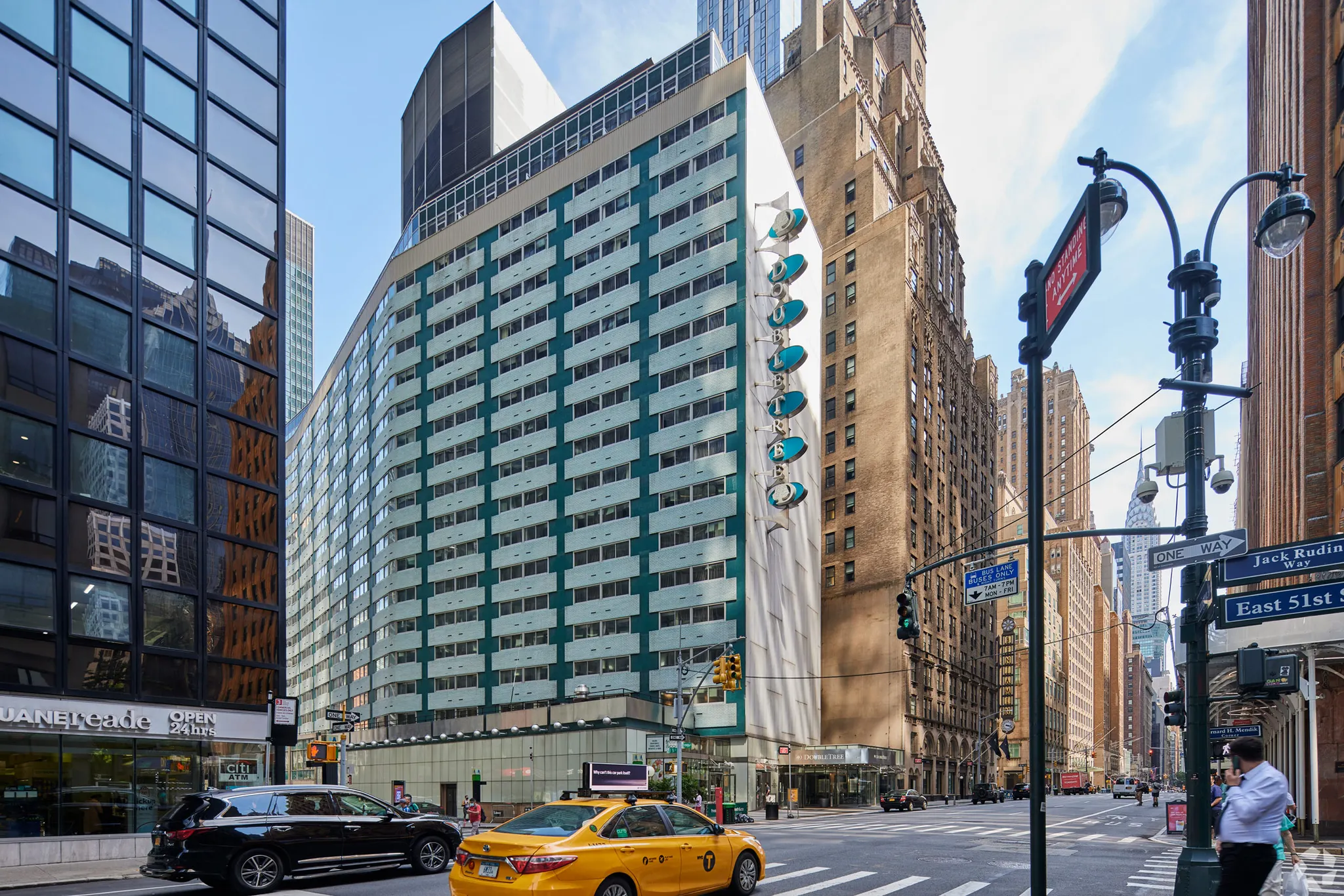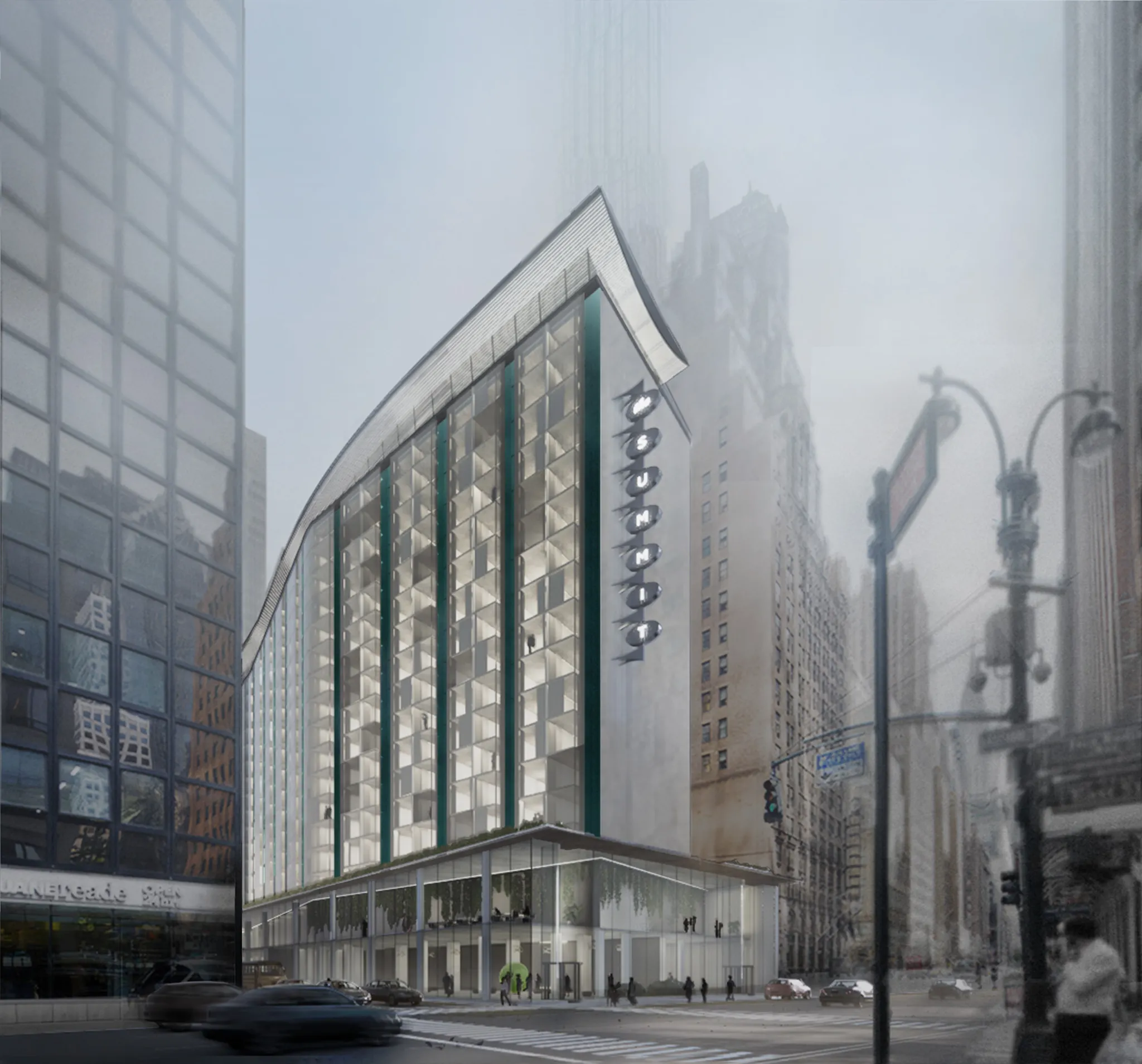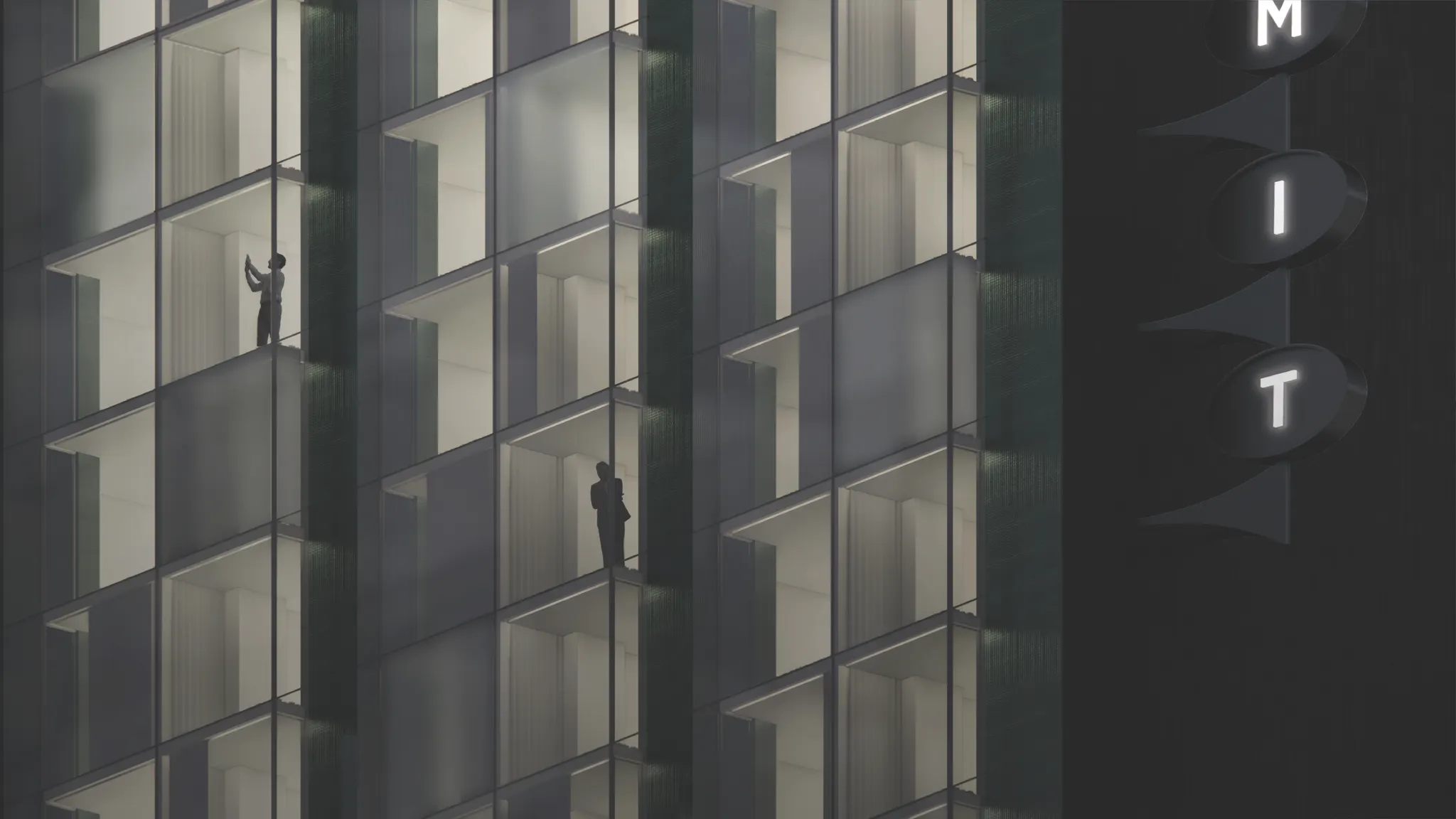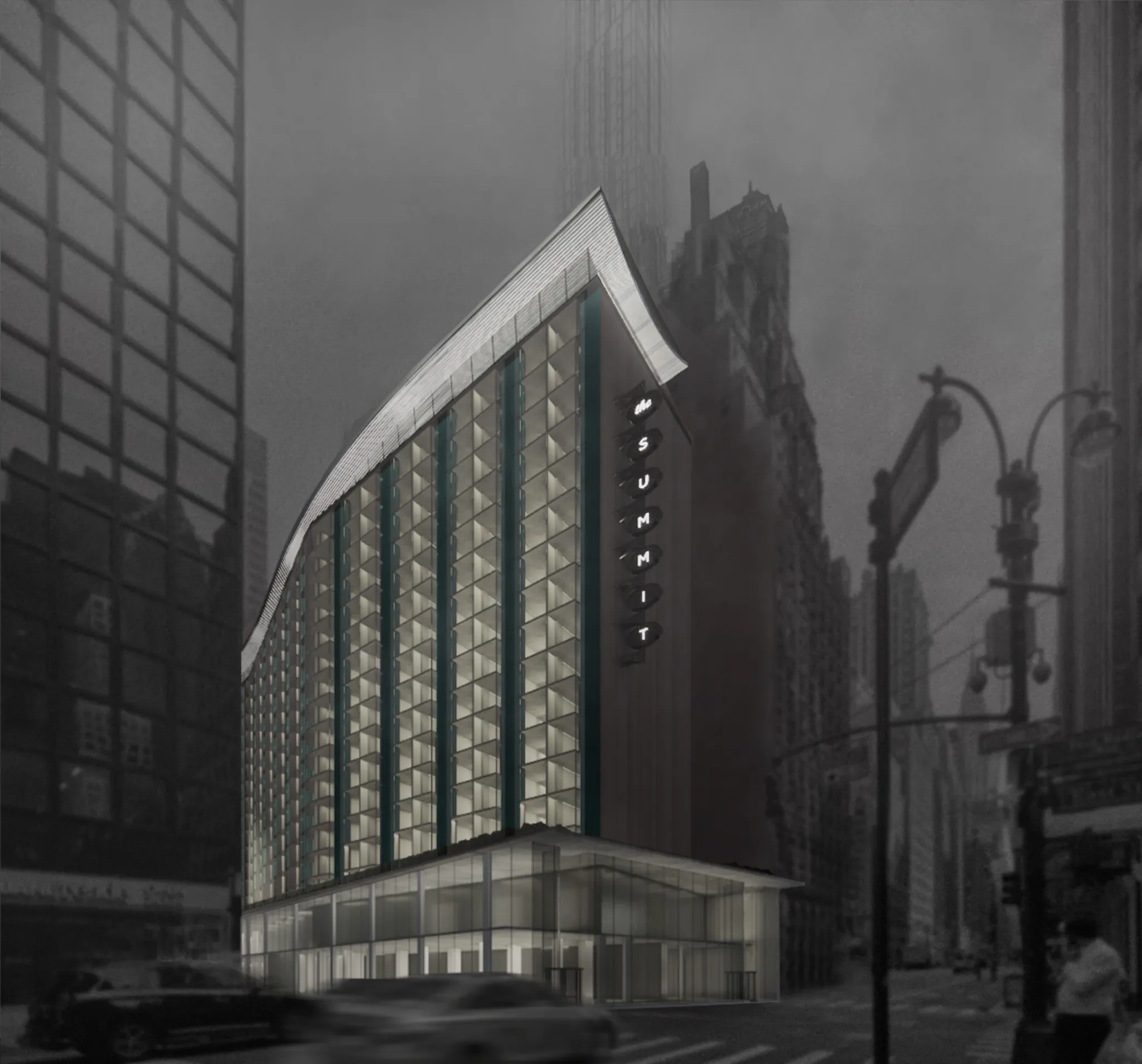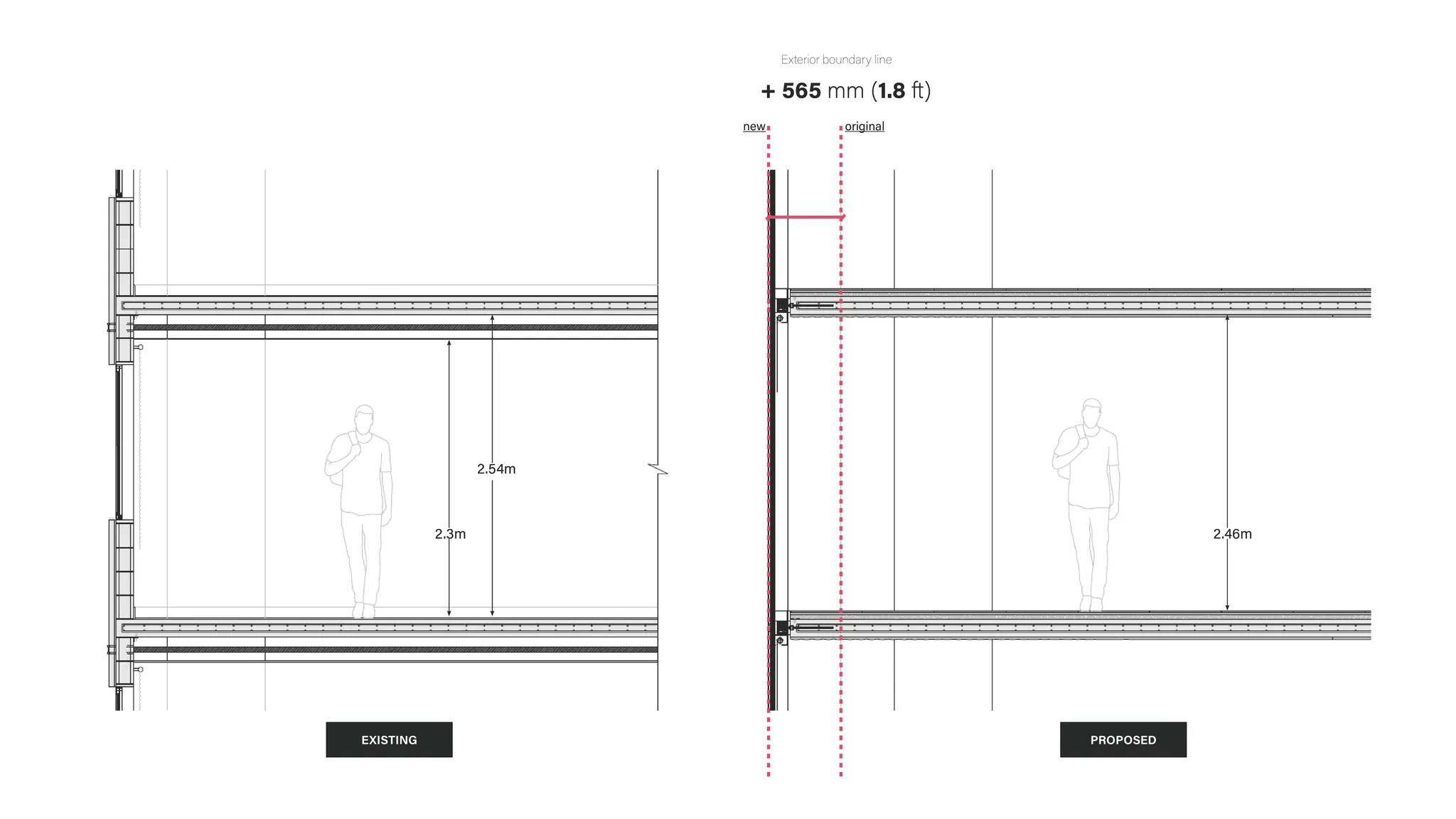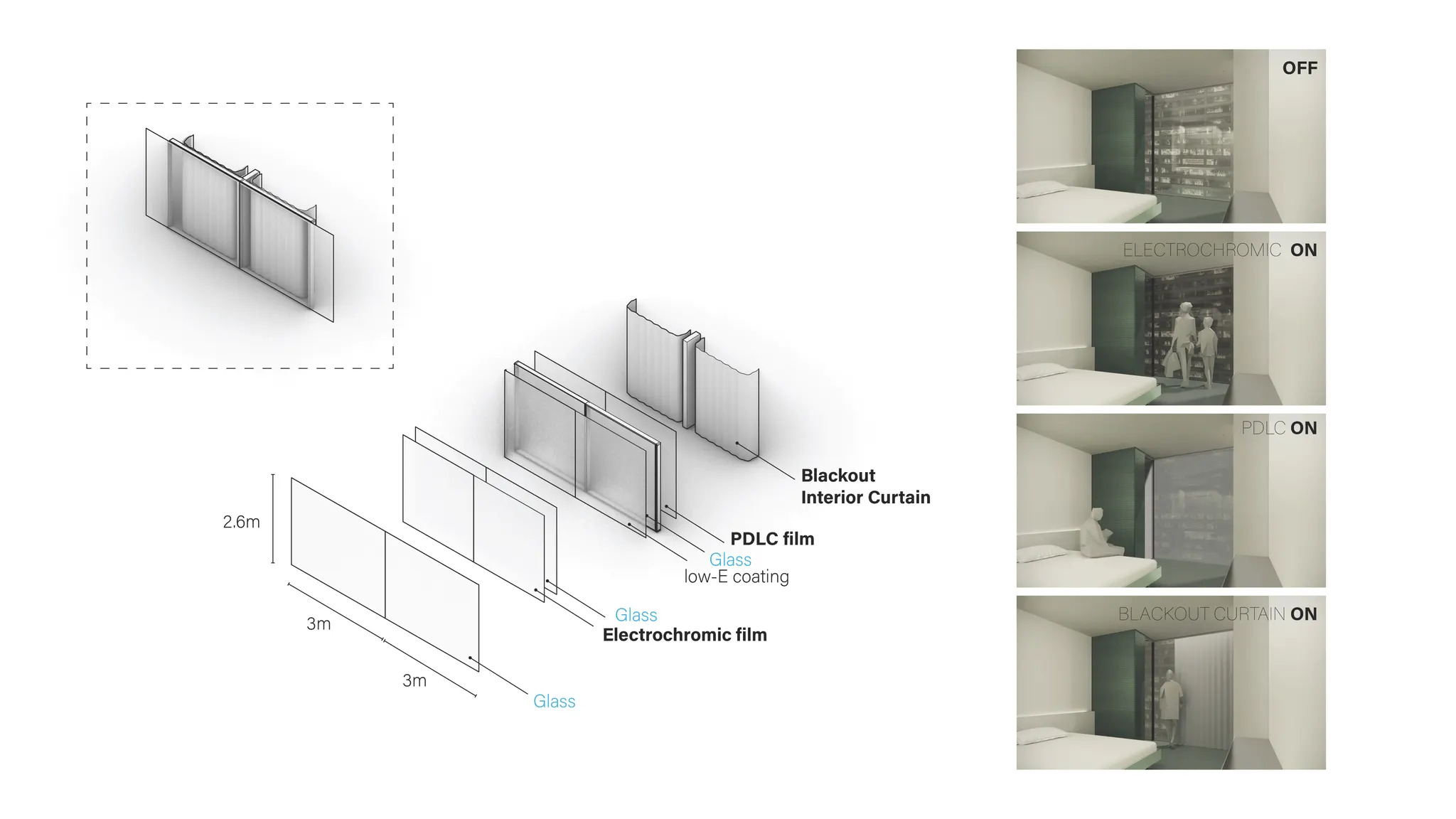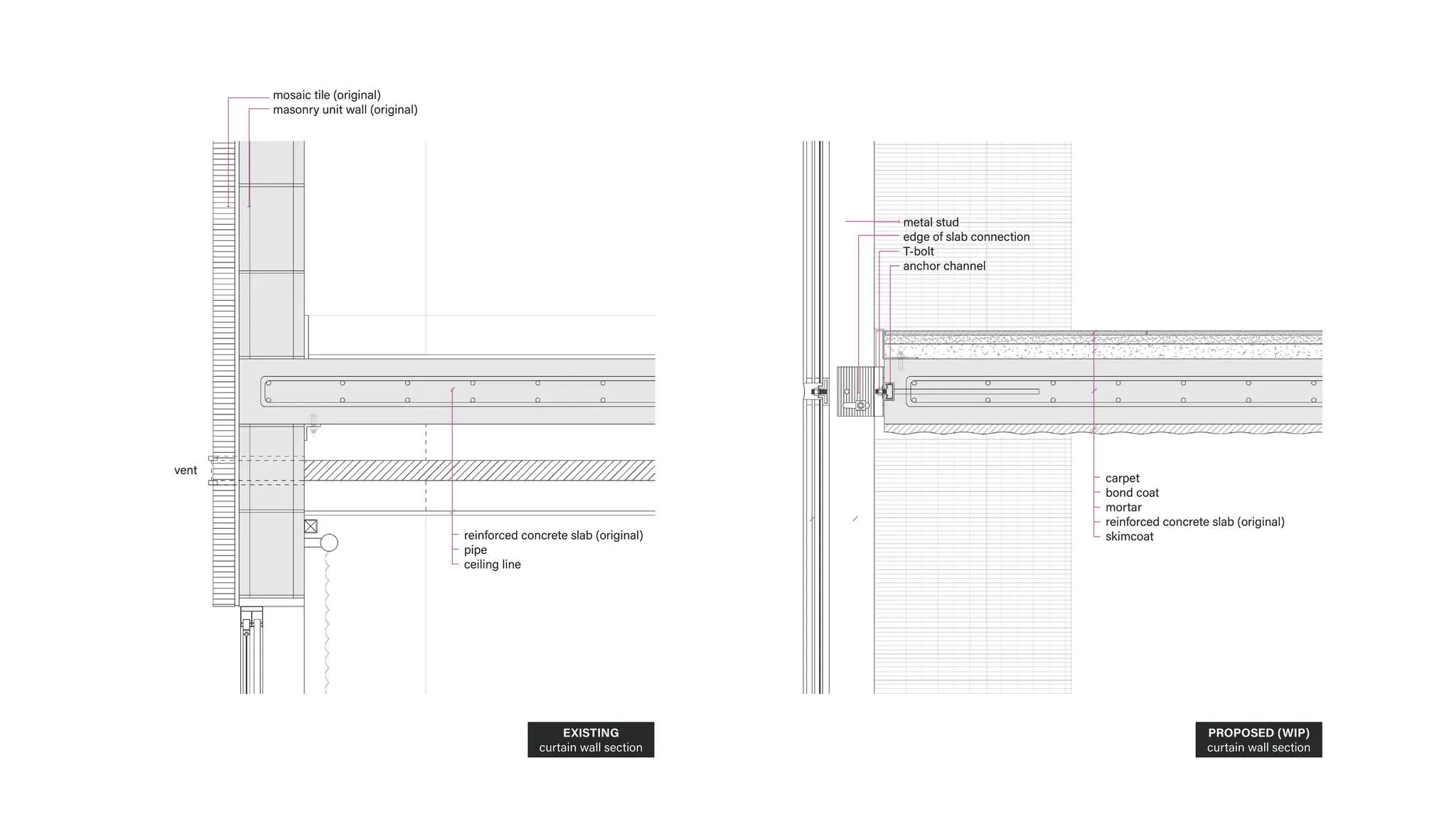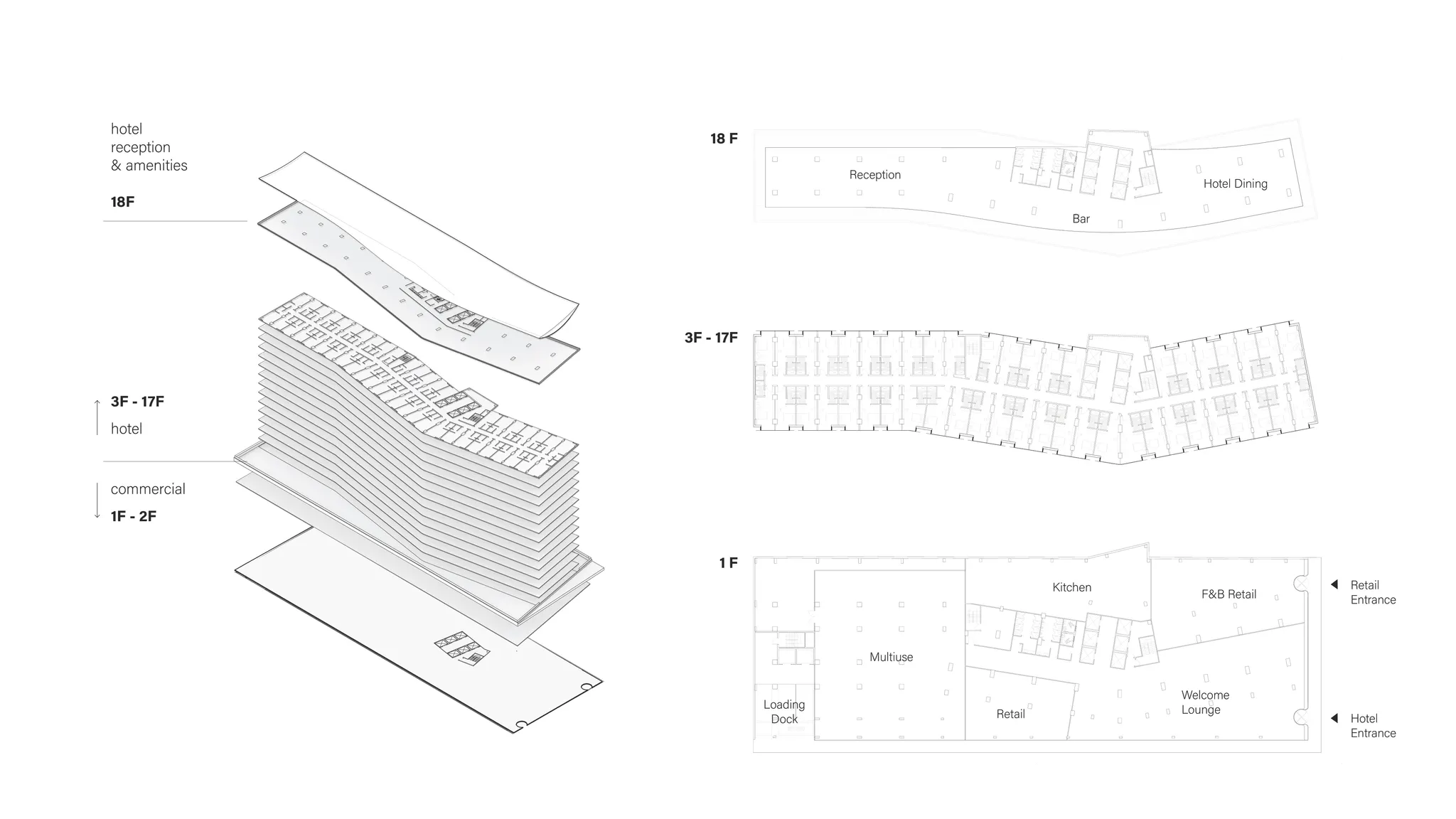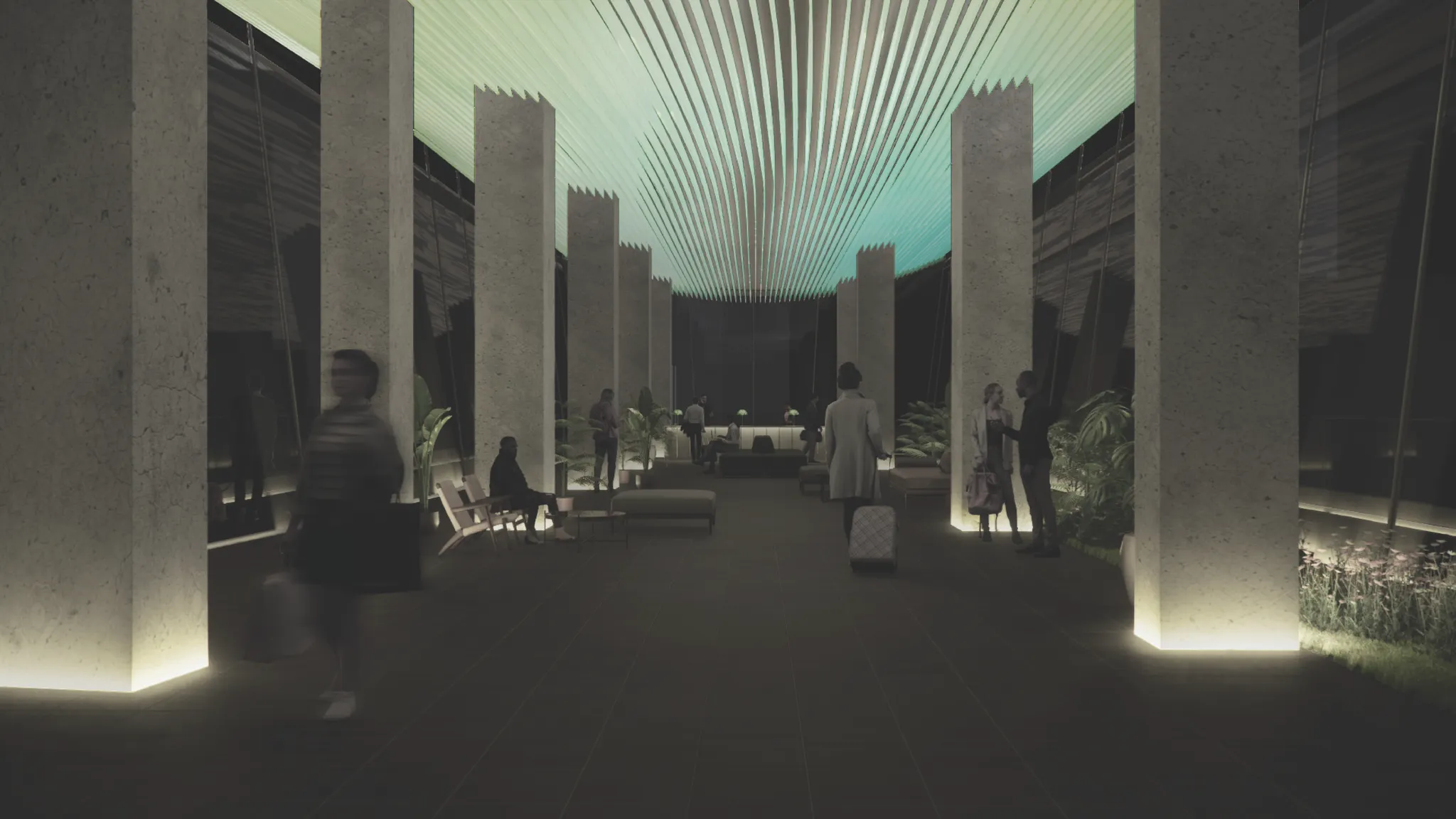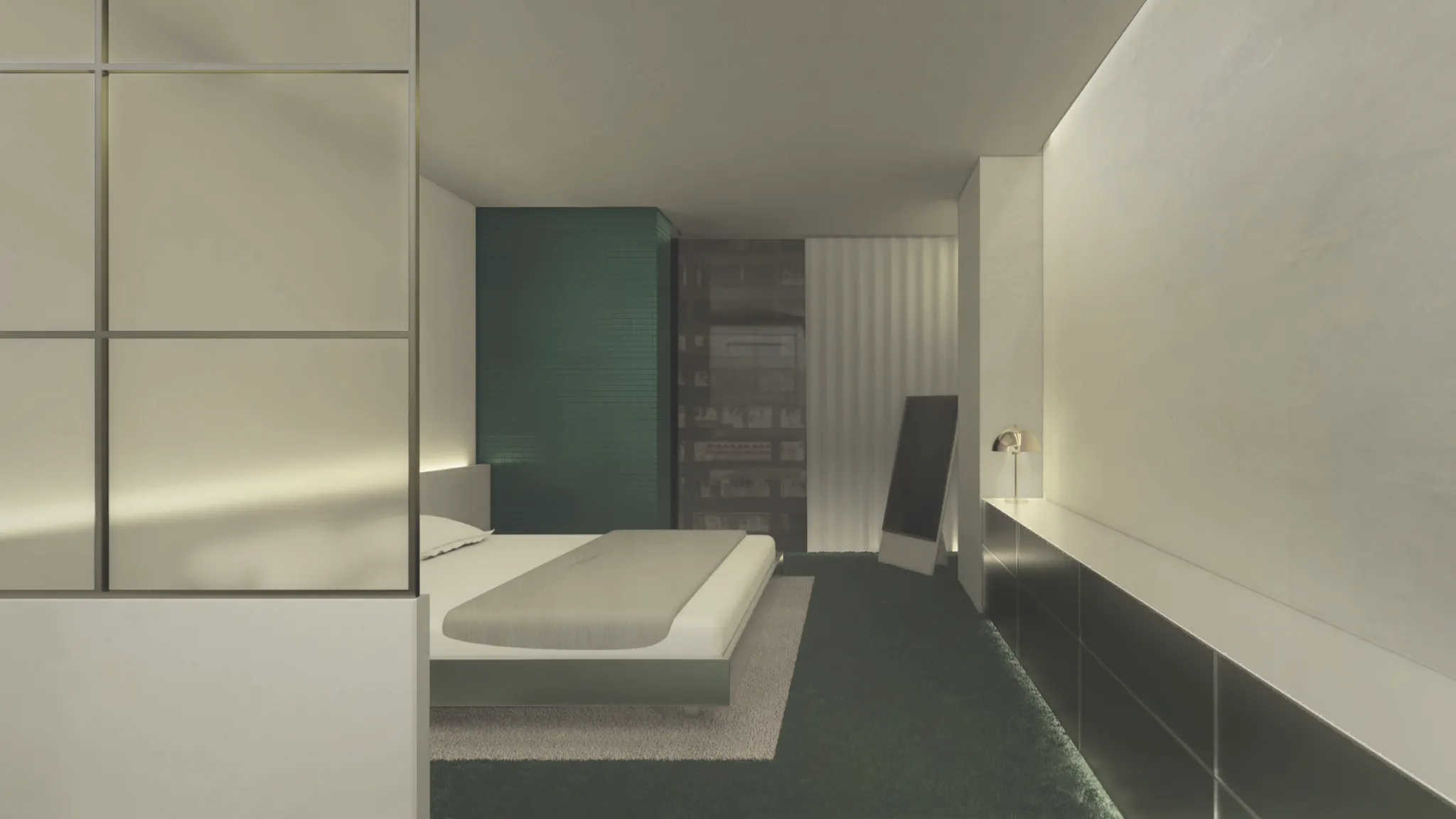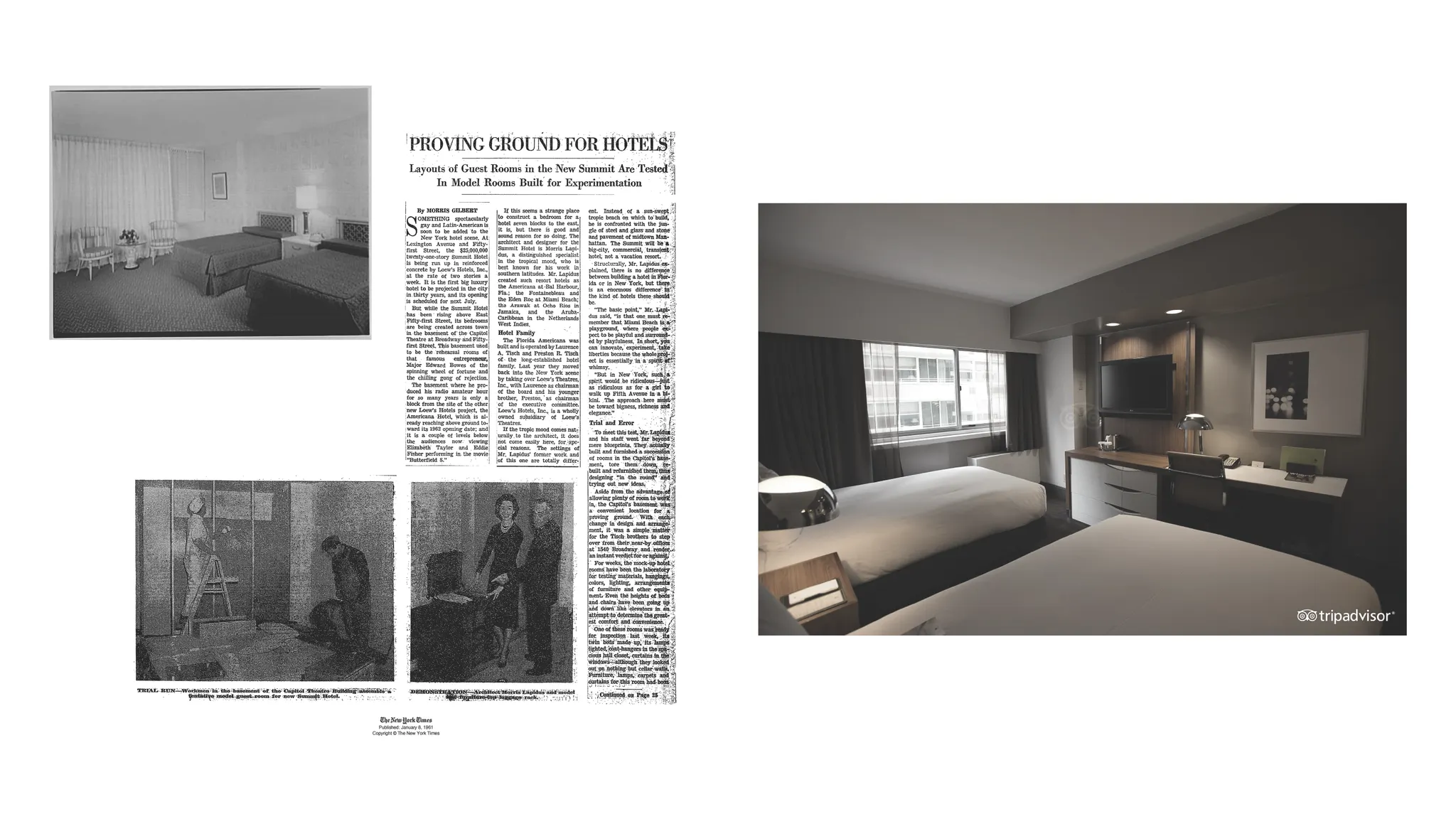𝙋𝙧𝙤𝙟𝙚𝙘𝙩 𝙊𝙫𝙚𝙧𝙫𝙞𝙚𝙬
The Summit Hotel, designed by Morris Lapidus, is a striking structure known for its unique shape, vibrant color, and stainless steel signage. A standout achievement for the architect, it was the first hotel built in Manhattan in 30 years and his debut project in NYC. Opening its doors in 1961, it quickly gained attention from the media and a notorious reputation as a bold and striking addition to the cityscape.
Despite the initial reaction, The Summit Hotel stands as a city landmark and a prime example of Morris Lapidus's distinct design aesthetic. A rarity in today's NYC, this hotel is a testament to his bold vision. With the recent trend of office redevelopment in East Midtown Manhattan, this project raises the question of whether repositioning the hotel could enhance its value by embracing Lapidus's design legacy.
𝙍𝙚𝙥𝙤𝙨𝙞𝙩𝙞𝙤𝙣𝙞𝙣𝙜
Rather than disregarding the hallmarks of Morris Lapidus's design, this project endeavors to celebrate the existing materials and unique features of the hotel. It also takes into account practical concerns, such as the building's low ceiling height and dense column grids, in order to create a cohesive and functional redesign.
Repositioning Strategies
Proposed
𝙏𝙝𝙚 𝙎𝙪𝙢𝙢𝙞𝙩 𝙃𝙤𝙩𝙚𝙡 𝙇𝙚𝙭𝙞𝙣𝙜𝙩𝙤𝙣
¹ 𝙁𝙖𝙘𝙖𝙙𝙚
This project introduces an innovative new addition - a 2' slab extension - that allows for a unique, intimate viewing experience of the building's cohesive material expression.
The new triple-glazed facade system boasts three cutting-edge features. For optimal solar control, it employs electrochromic glass to regulate incoming sunlight. For privacy protection, it features PDLC smart film that can be activated to make the 7' glass panels opaque. To ensure complete privacy, the system includes blackout interior curtains that follow the subtle curve of the exterior facade.
² 𝙍𝙚𝙘𝙚𝙥𝙩𝙞𝙤𝙣
The ground floor of the redesign welcomes pedestrians with an expansive retail space, made possible by relocating the reception area to the top floor. The reception greets guests with an animated ceiling, illuminated by thin plastic LED light bars, offering a unique and memorable experience. The roof is slightly angled upward on the edges to increase visibility from street level, and features a subtle curve reminiscent of the original building's iconic S-shape design.
³ 𝙄𝙣𝙩𝙚𝙧𝙞𝙤𝙧
The hotel not only expands communal spaces but also adds 30 more hotel rooms compared to the original. The redesigned rooms feature a modern, mid-century inspired aesthetic, with a nod to Morris Lapidus's design preferences. The mosaic tile that originally covered the exterior of the building is carried into the interior of the rooms, providing a tactile connection to the raw materials favored by the architect.
Existing
End of Page.


